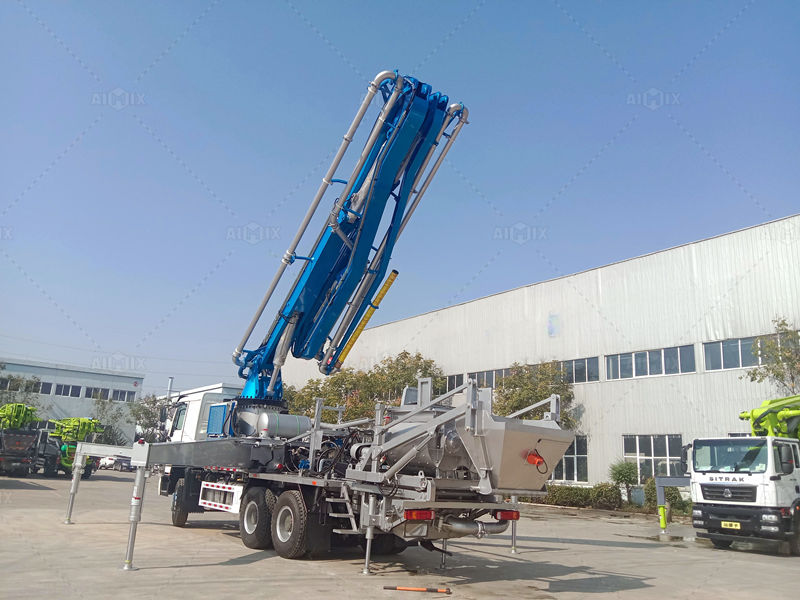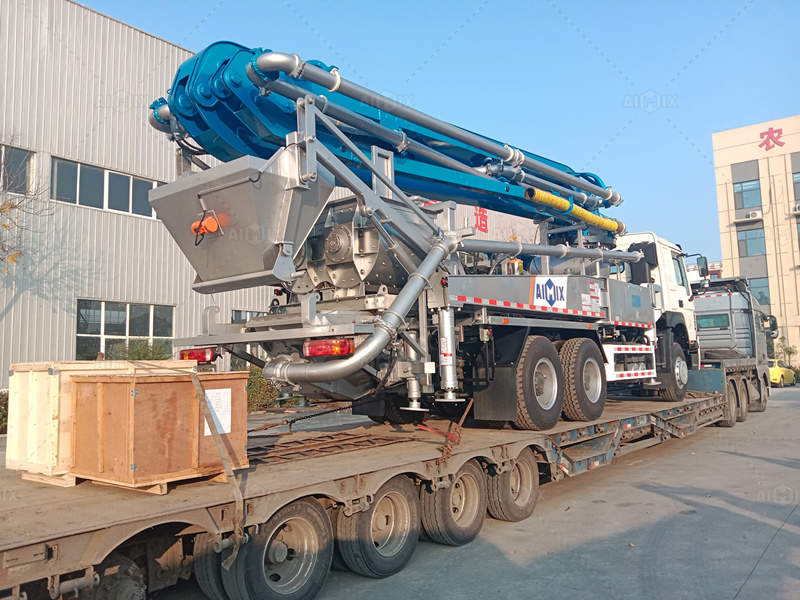The Importance of Transportation in Concrete Pump Investment
When contractors or developers plan to invest in a concrete pump with boom, one of the most significant considerations beyond the machine itself is transportation from the factory to the actual construction site. While many buyers focus solely on the concrete pump machine price quoted by the manufacturer, the overall expenditure is not complete until transportation logistics are factored in. For many projects, the cost associated with moving the equipment can significantly increase the total cost of concrete pump, especially if the site is in a remote or challenging location. Understanding how this element of logistics impacts overall budgeting is crucial for contractors aiming to keep projects profitable.

Why Concrete Pumps with Boom Require Special Transportation
A concrete pump with boom is a complex piece of equipment, often larger and heavier than other pumping options. Unlike smaller tools such as a portable concrete pumper, these machines cannot simply be loaded on a small truck or trailer. They often require specialized transportation vehicles that can handle oversized loads, secure permits, and sometimes even escort services if the pump must travel through restricted roadways. The sheer size of a boom pump means that moving it from the manufacturer’s factory to a construction site involves not only fuel and labor but also logistical planning to comply with transport regulations. This adds layers of costs that directly influence the final price a contractor pays for deploying the pump on-site.
Impact of Distance on Overall Cost of Concrete Pump
The longer the distance between the factory and the construction site, the higher the expenses. For example, if a contractor orders a machine manufactured overseas, international shipping costs, import duties, port handling fees, and inland freight charges all contribute to the cost of concrete pump. Even within the same country, transporting a boom pump over long distances requires high-capacity trucks and skilled drivers, which inflates the budget. Many buyers initially evaluate only the base concrete pump machine price, but overlooking the cost of long-distance hauling often leads to surprises when total expenses are tallied. Contractors should always include distance-based transport costs in their financial projections before committing to a purchase.
Terrain and Road Conditions as Hidden Factors
Beyond distance, the actual road conditions and terrain also influence transportation costs. Moving a concrete pump with boom through urban highways is very different from hauling it to a rural construction site with narrow or unpaved roads. Difficult terrain may require additional labor, specialized off-road vehicles, or even partial disassembly of the machine to ensure safe delivery. Each additional step increases expenses and, in some cases, causes delays in project timelines. This is where comparing options like a large boom pump and a portable concrete pumper becomes practical. While the portable unit is easier and cheaper to transport, the boom pump offers capacity advantages that justify the higher cost, provided the contractor budgets correctly for delivery.

Time Delays and Their Influence on Project Costs
Transportation logistics can also affect the schedule of the construction project. If a concrete pump with boom arrives late due to shipping delays, customs clearance, or unexpected transport restrictions, the entire project may be held up. Idle labor, stalled foundation works, and delayed structural pours can cost contractors far more than the shipping fees themselves. Therefore, the transportation phase is not just about calculating fuel or driver wages; it also influences the overall financial efficiency of a project. Some contractors even choose to buy from regional suppliers at a slightly higher concrete pump machine price just to avoid these delays and hidden costs.
Comparing Machine Price vs. Total Operational Cost
It is important to distinguish between the concrete pump machine price quoted by the manufacturer and the actual cost of concrete pump when operational. The base machine price may seem affordable, but once transportation, taxes, insurance, and setup are added, the real cost can be substantially higher. For example, a contractor purchasing from an international supplier might save on the initial price but end up paying more due to shipping, import duties, and complex delivery arrangements. In contrast, buying locally may increase the upfront price but reduce transportation costs and risks, balancing the investment more effectively.
Strategic Role of Portable Concrete Pumper in Logistics
In certain projects, contractors use a portable concrete pumper alongside a boom pump to balance costs and efficiency. For smaller or medium-sized pours, the portable unit is easy to move and can handle jobs without incurring the heavy transportation costs of relocating a boom pump multiple times. This strategy allows contractors to limit the use of a concrete pump with boom to large-scale pours, while the portable machine covers smaller, nearby works. The result is a more flexible approach that reduces unnecessary transportation expenses and optimizes overall spending.
Negotiating Transportation with Concrete Pump Companies
Buyers should also recognize that some manufacturers or suppliers bundle transportation services into their sales packages. When negotiating with a concrete pump company, contractors can request details about delivery terms, transport insurance, and logistics support. Sometimes, paying a slightly higher concrete pump machine price to a supplier who offers full-service delivery ends up being cheaper than arranging transport independently. Transparent communication with suppliers can help reduce unexpected expenses and ensure the equipment arrives safely and on time.
Final Thoughts
In summary, while the concrete pump machine price is an important starting point in evaluating equipment, contractors must always consider how transportation influences the total cost of concrete pump. A concrete pump with boom is a heavy, oversized piece of machinery that requires careful and often expensive logistics, particularly for long-distance or remote-site projects. Terrain, distance, and road conditions all play a role in shaping the transportation budget. Using complementary equipment like a portable concrete pumper and negotiating delivery terms with suppliers can help control expenses and prevent costly delays. Ultimately, factoring transportation into the budgeting process ensures that contractors make informed decisions, keeping their projects on schedule and financially viable.